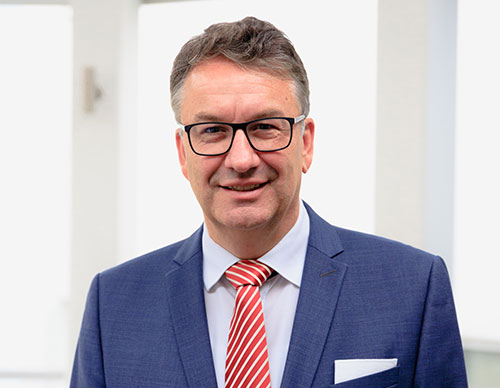So, we’re going back to the Trabant with its hardened resin body?
It does have a cult following now (laughs)! We need to move on from the old prejudices against recycled or bio-based materials. Today, these kinds of materials can have an appealing, high-quality appearance thanks to haptic effects. It all depends on how they’re processed. Our colleagues at Fraunhofer WKI have shown this is possible with their flax-based components.
Are there other solutions?
There are many exciting custom solutions, including in battery production, intelligent lightweight construction and assistance systems. When these are combined in vehicle manufacturing, it massively boosts the car’s quality.
Is everything heading toward electric cars?
It’s clear that the automotive industry is increasingly focused on electric cars. If more renewable energy is used for manufacturing and charging, and there are fewer combustion engines on the road, that will have a positive effect on CO2 emissions.
None of that makes cars sound like an attractive mode of transportation for the future.
There won’t be one single car of the future. Cars will be part of a holistic mobility strategy, and will be integrated into complex transportation systems. In the connected mobility vision, everything will coexist — cars, buses, trains, electric scooters, cargo bikes, taxis and pedestrians. Through the Fraunhofer Traffic and Transportation Alliance, which is coordinated by Fraunhofer IAO and Fraunhofer IML, we are actively in volved in the European EIT Urban Mobility initiative in order develop and share better solutions. In addition to the opportunities that digitalization opens up for us, cars need to be constantly reimagined in terms of their full range of components, performance and features and should be designed to form an integral part of sustainable, connected mobility.
Does government need to regulate the market with bans and phase-out deadlines?
I don’t approve of that. The role of government should be to provide incentives for development, to give impetus and to create a favorable environment. That’s the only way to kick-start competitive innovation for future mobility. Ultimately, the winners will be the ideas and clever concepts that people really benefit from. Technologies that don’t work end up disappearing on their own.
What role will comfort and infotainment play?
A very large one. In the context of transportation, man does not live by usefulness alone. Fundamentally, comfort plays a huge role. And when it comes to electrically powered vehicles, we also need to address issues in a new way. Internal combustion engines simply masked a lot of disruptive noises — the quiet electric motor is completely different. We have many ideas in this area, such as metamaterials, which are being developed at the Fraunhofer Institute for Structural Durability and System Reliability LBF. The ultimate goal is to integrate the car into the overall transportation system using 5G wireless technology and AI-driven software. Institutes such as Fraunhofer HHI and the Fraunhofer Institute for Integrated Circuits IIS are working on this very area. This interconnection will open up many exciting possibilities for more than just cars — there will be mobility service providers with completely new ideas, offering incredible levels of comfort. Just imagine the possibilities if you could use your self-driving car as a mobile office! Today, engineers and designers at car manufacturers need to set to work and develop these concepts. At Fraunhofer, we’re doing just that.
One area your research focuses on is logistics. Are there technologies that play a role in private mobility?
Definitely! Within the massive trend toward autonomous driving, there are solutions for both freight and passenger transportation and by carrying out projects in each other’s sectors, we and our partners are learning from each other. We’re seeing more online retail and innovative last-mile solutions, from packing stations to cargo bikes to autonomous delivery robots. When private individuals want to buy or use a car, more logistics services in the consumer sector are allowing greater flexibility, for example in terms of vehicle size.
Will the automotive industry remain the most important industry in Germany in the future?
There are a lot of indications that it will — but as part of a far-reaching structural transformation. Car manufacturers must see themselves as mobility providers, and combine mechanical engineering, design, energy systems, software expertise and transportation systems to create an attractive package.
